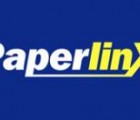
Group revenues at the paper company were down 26.5% year-on-year to $5.2bn. The company also suffered a 20% decline in overall volumes to 2.9 million tonnes, while its merchanting volumes fell 7% to 2.8m tonnes.
The company’s figures were largely impacted by significant item costs of $170.3m, which included a $154m charge as part of its exit from manufacturing in Tasmania.
The company announced in December last year it would be quitting its manufacturing operations to focus on its global merchanting business, resulting in the closure of its Burnie and Wesley Vale mills.
Chairman Tom Park said: “The past year has been the most difficult but also the most transformational in the history of Paperlinx. Whilst the results are disappointing, we have completed a range of major strategic initiatives, which have resulted in the company being more focussed, streamlined and flexible.”
The company has also wiped $54m of its net debt, from $218m in 2008/09 to $164m for 2009/10.
The company said a “weakness” in the European and UK markets produced a decline in its merchanting EBIT earnings, down from $70.1m in 2008/09 to $43.5m in 2009/10.
“Markets seem to have found a floor and volumes have stabilised versus the prior year in recent months, though the UK has suffered prolonged weakness,” Park said.
“We see this overall position continuing without any accelerated improvements in the near term, and have begun the year at expected volume and profitability levels to-date.”
The company also pointed to recent “streamlining”, which earlier this month saw Tony Kennedy take on the role of chief financial officer following the departure of two management figures at the company.
“We are taking prudent steps to further streamline our organisation and further reduce overheads and working capital. Now, with the distractions of the refinancing, exit from historical lenders, and the closure of Tasmanian operations and various restructurings behind us, we are able to focus fully on our underlying business,” Park said.
“Diversified business growth in areas including sign and display, graphics, digital, industrial packaging and converting will improve with overall economic improvement. Upside leverage also exists against our new cost and working capital base in our core paper merchanting activities if markets and volumes improve.”
Click here for the latest headlines from across the printing industry.
Comment below to have your say on this story.
If you have a news story or tip-off, get in touch at editorial@sprinter.com.au.
Sign up to the Sprinter newsletter

